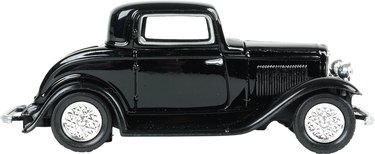
Painting a styrene model is the final step in each modeling project. No matter how much care you use in constructing the model, the paint you use and the skill of application are what will make or destroy your finished project. There are several paint choices. Cleanup, the choice of paint color and whether you prefer to airbrush or use a paint brush should be considered when picking the paint that works best for you.
Enamels
Video of the Day
Enamels have long been used to paint styrene models and a number of brands are available. Many enamels need to be thinned with mineral spirits. Easy to airbrush, enamels provide a smooth finish when properly diluted. After curing for several days the enamel finish becomes impervious to its own solvent. Enamels can be applied with either an airbrush or a paintbrush. Floquil brand paint should be applied with an airbrush only because it contains a thinner with xylene that causes styrene to craze.
Video of the Day
Acrylics
Acrylics are water-based so cleanup is easy with soap and water. Traces of oil from fingers or lubricants used in the molding equipment, may keep the paint from adhering well, but thoroughly cleaning the styrene model with detergent and water before painting will prevent this from happening. When airbrushed, acrylics adhere well and dry quickly.
Automotive Paints
Automotive paint has several advantages when used to paint styrene car models, according to the IPMS Stockholm website. Automotive paints provide a very thin coat that allows car details to show clearly, even after several paint applications. Drying to the touch almost immediately will decrease the chances of dust adhering to the surface. The model can be polished after 24 hours. Automotive paints must be applied with an air brush and the choice of paint colors are nearly unlimited with car manufacturers adding new colors every year. However, automotive paint, as well as the thinners, are more toxic than paints made specifically for styrene models and should always be used in well-ventilated areas with the proper protective equipment.
Primer
A primer is applied directly to the styrene model and is covered by additional layers of paint. Some modelers always use primer, while others never do and some may depending on the project. Due to the high quality of modern paint, a primer is not necessary, but there are benefits to using it. The primer will show up surface defects that are difficult to see before painting. Additionally, a primer reduces the amount of paint needed, improves adhesion and helps with preshading which gives the model depth.